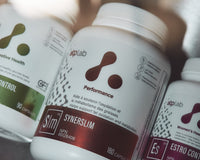The difference between training intensity and training ‘’intensity

The difference between training intensity and the “intensity” of the training
I often hear about intensity. How rough or incredibly tough was a workout. You see, in my world, the wonderful world of strength and conditioning, intensity means something much more different than your actual feeling after a hard ass workout. It also depends on who you are talking too. Someone who has never trained before will find Zumba dance “intense” while a CrossFit athlete will laugh out loud at this comment. You get the point.
We usually describe intensity as a percentage of the maximum weight you can move for one time (1RM). For those who never had that experience, imagine trying to lift a car off your chest and doing it with every bit of strength left in your body. That’s about it.
Perceived effort
Most people mix up the intensity with the effort they put into a workout. You can do endless sets of butt kickback or on the adductor/abductor machine and have a great sense of going through a tough workout. Yes, your heart rate might be elevated, but your overall nervous system might not be as taxed as if you were going through a strongman workout.
Experience
Obviously, for someone who never trained before, the first workout might seem intense, but give that same workout program to someone with 5 to 10 years of experience lifting weight, and even if he or she might find it challenging there’s no way they will consider it as “intense” as the beginner might feel.
However, you might also give a hard workout to a beginner and he/she may find it easier than another client more experienced. Why? The beginner can’t use a higher percentage of his 1RM weight due to neural adaptation. You see, training develops motor neuron pathways that enhance an athlete's brain/muscle coordination during functional movements. That “adaptation” the athlete goes through refers to the brain’s ability to recruit the muscles needed to be contracted for a given movement. Repeating an exercise in resistance teaches an athlete's brain to fire the correct muscles to achieve the desired motion. Over time, the athlete’s technique becomes ingrained and the movement more fluent. You get to use heavier weight, recruiting more muscles, paying a greater metabolic cost while working out.
Put a skinny beginner against an advanced muscular weightlifter on a workout session commanding a superset bench press, deadlifts, pull-ups and back squats with minimal rest. Before long, you will probably kill the big man while the beginner might cruise through with a laugh.
How to train intensity
Training in what we call an “intensity phase” would mean to be closer to your 1RM weight. So you would use reps and sets that would look like this but not limited too.
5,3,1,1,3,5
5,3,1,1,1,1
2-4 reps
3,3,2,2,1,1
etc.
An intensity phase could also be following an accumulation phase, which means that you have a lot more work to do with more sets and exercises. A mode usually used for hypertrophy protocols. So, you could be doing sets of 6-10 reps with 8-10 exercises, using 60-70% of your 1RM, followed by an intensity phase using 5 sets of 5, with a higher percentage of your 1 RM (about 80%).
The golden rule is “the higher the intensity, the lower the volume”. Obviously, you can’t sustain a huge workload with max weight, but you do can handle a lot of work (volume) with a lower percentage of your max. In other words…
“Volume is inversely proportional to intensity.”
One way to improve work capacity with a higher percentage of your 1RM is to manipulate the rest period. It is possible to keep the same weight load and cut down on the rest period, or again use time measured sets. Improvement and progress don’t always come by loading up the bar with additional plates. You can cut 20 seconds off your rest period every week for 3 weeks while aiming at keeping the same intensity load.
Another way to improve your work capacity is to use time measured sets with a given percentage of your max. Let’s say you alternate two exercises at 85% of your 1RM and go at it for 30 minutes. Do as many sets as possible within that time frame without dropping more than 5% off your weight load. While you rest as needed, the following weeks should show improvement and you should be able to complete one or two more sets while still decreasing your rest period by 5 to 10 seconds.
The only problem with using a percentage of your max weight is that it constantly changes. Sleep, rest and nutrition can all have a great impact on your max weight. Use them wisely!
Coach Eric





